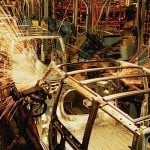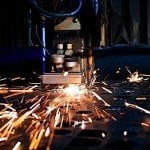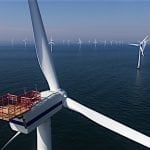Construction is getting underway on a wind power project that will provide 270 megawatts of electricity in Ontario. Samsung Renewable Energy, Inc. and Pattern Energy Group LP broke ground on the South Kent Wind project in the Municipality of Chatham-Kent. The project will use Ontario-made wind turbine blades and towers to generate enough energy for the needs of approximately 100,000 homes each year. This is the first project under the $7 billion green energy contract between the province of Ontario and Samsung Renewable Energy.

A statement issued by Samsung says that Ontario workers and subcontractors “will be involved in every aspect of the South Kent Wind project, from manufacture and assembly of the wind turbine components to site construction, installation work and project operations.” The 124 wind turbines for the project will be manufactured at Siemens’ turbine blade facility in Tillsonburg. The turbine towers will be manufactured at CS Wind’s Windsor facility, using Ontario-made steel.
The vice president of Siemens Canada’s Wind Power Division said that the company, which is increasing production and hiring “to ramp up to full capacity” is expected to create “up to 600 jobs” in Ontario
An average of 300 workers will be on-site throughout project construction, with approximately 500 workers during peak construction periods, the statement says. Local subcontractors will be involved in work including building the access roads, installing foundations and erecting the turbine towers.
The Executive Vice President of Samsung C&T, KJ Kim, said that the South Kent Wind project would create “thousands of high-skilled jobs.”
The turbines used at South Kent Wind will use a shading product called TowerSHADE that eliminates light visibility from ground level at night, while allowing the red warning lights on the turbines to be seen from aircraft. Light visibility will be “completely eliminated” from below the turbine out to 1.5 km.
The project is scheduled for completion in the spring of 2014. It will offset approximately 842,000 tonnes of CO2 each year, the equivalent of taking nearly 148,500 cars off the roads, and conserve enough water to meet the needs of approximately 23,600 Ontarians.
































